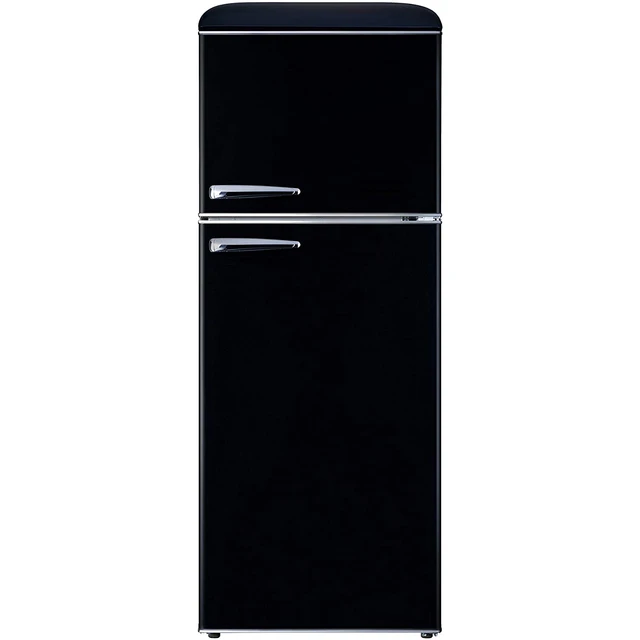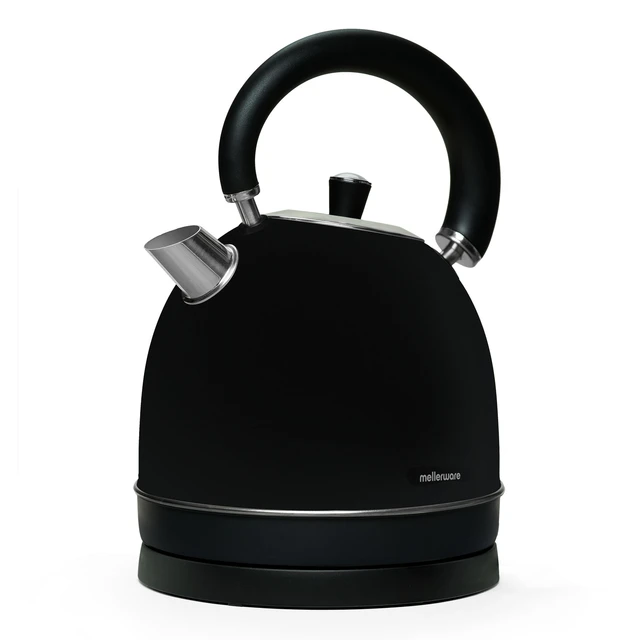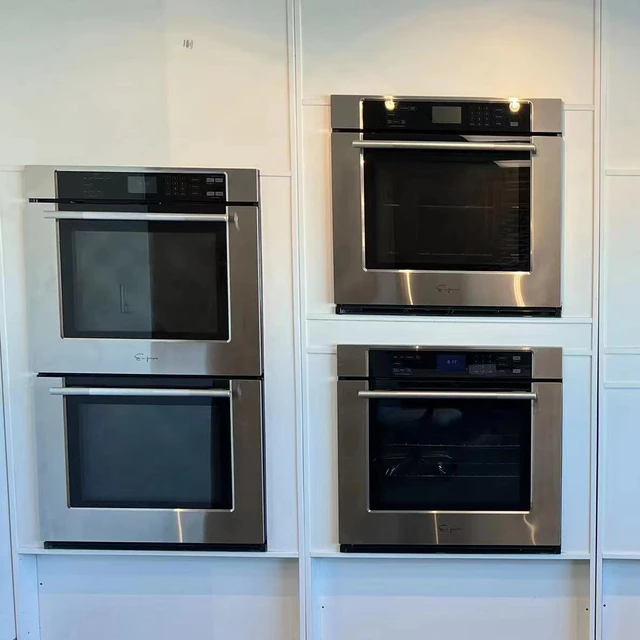Introduction:
Combining white kitchen cabinets with black appliances can create a striking and visually appealing contrast in your kitchen design. This combination offers a modern and sophisticated look, with the white cabinets providing a clean and bright backdrop for the sleek black appliances. However, achieving the right balance and harmony between these contrasting elements requires careful consideration. In this article, we will explore how to match white kitchen cabinets and black appliances, examining factors such as color schemes, materials, textures, and accents. By understanding these elements, you can create a cohesive and stylish kitchen design.

How to match white kitchen cabinets and black appliances?
Establish a Color Scheme:
a. Monochromatic Contrast: A monochromatic color scheme uses various shades of black and white throughout the kitchen. This creates a cohesive and harmonious look while allowing the black appliances and white cabinets to be the focal points. Consider using different shades of gray or silver as accent colors to add depth and visual interest.
b. Bold Accents: To add a pop of color and personality to the black and white color scheme, incorporate bold accents in the form of vibrant colors. Consider using a bright red, blue, or yellow as an accent color through accessories, such as bar stools, kitchen utensils, or decorative items. These accents create a focal point and break up the monochromatic palette.
Complementing Materials and Finishes:
a. Matte vs. Glossy: Consider the finishes of both the cabinets and appliances to create a balanced look. For example, if your white cabinets have a glossy finish, consider choosing black appliances with a matte finish. Alternatively, if your white cabinets have a matte finish, opt for black appliances with a glossy finish. This contrast in finishes adds visual interest to the design.
b. Stainless Steel Accents: Incorporating stainless steel accents, such as cabinet handles, faucets, or lighting fixtures, can help tie together the white cabinets and black appliances. Stainless steel complements both colors and adds a modern and sleek touch.
c. Natural Materials: Introducing natural materials, such as wood or stone, can soften the contrast between white cabinets and black appliances. For example, consider adding a wooden cutting board, a stone countertop, or a backsplash with natural stone tiles. These materials bring warmth and texture to the overall design.

Balance with Contrasting Elements:
a. Light and Dark: Achieve balance in the kitchen design by incorporating light and dark elements beyond the cabinets and appliances. For example, pair white cabinets and black appliances with light-colored countertops, backsplashes, or flooring. This contrast helps create a harmonious look while preventing the kitchen from feeling too stark.
b. Balance of Textures: Introduce different textures to add depth and visual interest. For instance, pair smooth, glossy black appliances with textured white subway tiles or a textured backsplash. This combination creates a dynamic contrast that adds personality to the kitchen design.
c. Natural Light: Maximize natural light in the kitchen to balance the contrast between white cabinets and black appliances. Large windows, skylights, or glass doors allow natural light to flood the space, preventing the kitchen from feeling too dark or heavy.
Accentuate with Lighting and Accessories:
a. Lighting Fixtures: Use lighting fixtures strategically to highlight and accentuate both the white cabinets and black appliances. Consider installing pendant lights or track lighting above the kitchen island or dining area to draw attention to these elements. The lighting fixtures can serve as statement pieces and enhance the overall aesthetic.
b. Glass and Metallic Accents: Incorporate glass elements, such as glass cabinet doors or a glass backsplash, to add a reflective quality and enhance the contrast between white and black. Additionally, metallic accents, such as chrome or brushed nickel hardware, can provide a modern and polished touch to the overall design.
c. Colorful Accessories: Use colorful accessories to break up the black and white color scheme and add visual interest. Consider displaying colorful dishware, decorative items, or vibrant flowers to bring life and personality to the kitchen design.

Consider the Layout and Proportions:
a. Balance of Visual Weight: When combining white cabinets and black appliances, consider the layout and proportions of the kitchen. Aim for a balanced distribution of visual weight to create a pleasing and cohesive design. For instance, if you have a large black range or refrigerator, balance it out with ample white cabinetry to maintain visual equilibrium.
b. Appliance Placement: Strategically place the black appliances within the kitchen layout to create a sense of harmony. Consider grouping them together or integrating them seamlessly with the surrounding white cabinetry for a cohesive and unified appearance.
c. Contrast with Countertops and Backsplashes: Use countertops and backsplashes as transitional elements to create a smooth visual flow between the white cabinets and black appliances. Opt for light-colored countertops or backsplashes that provide a contrast to the appliances, enhancing the overall balance and harmony of the design.
Create a Focal Point:
a. Statement Piece: Introduce a statement piece or feature in the kitchen design to draw attention and create a focal point. For example, consider incorporating a black range hood, a black farmhouse sink, or a black kitchen island. This focal point can anchor the design and tie together the white cabinets and black appliances.
b. Backsplash Design: Use the backsplash as an opportunity to bring the white cabinets and black appliances together. Consider a patterned or mosaic backsplash with elements of white and black, creating a unifying feature that complements both components.

Maintain a Clean and Cohesive Look:
a. Regular Cleaning: To maintain the aesthetics of your white cabinets and black appliances, regular cleaning is essential. White cabinets can show dirt and grease more easily, so wipe them down regularly with a soft cloth and gentle cleaning solution. For black appliances, use appropriate cleaning products to prevent smudges and maintain their sleek appearance.
b. Consistent Design Elements: To ensure a clean and cohesive look, pay attention to other design elements in the kitchen. Coordinate the color and finish of hardware, faucets, and lighting fixtures to complement both the white and black components. This consistency will contribute to a seamless and well-designed space.
c. Minimalist Approach: Embrace a minimalist approach to maintain a clean and uncluttered look. Keep countertops free of unnecessary items and utilize storage solutions to keep the kitchen organized. This minimalist approach ensures that the contrasting colors remain the focus of the design.

Conclusion:
Matching white kitchen cabinets with black appliances can create a striking and visually appealing contrast in your kitchen design. By carefully considering color schemes, complementary materials, contrasting elements, and accentuating with lighting and accessories, you can achieve a cohesive and stylish look. Establishing a monochromatic color scheme or incorporating bold accents adds depth and personality to the design. Choosing complementary materials and finishes, such as matte versus glossy or stainless steel accents, ensures a balanced and harmonious look. Balancing light and dark elements, as well as incorporating different textures, adds visual interest and prevents the kitchen from feeling too stark. Finally, accentuating with lighting fixtures and incorporating colorful accessories completes the overall design and brings the black and white elements together. By following these guidelines, you can create a cohesive and visually stunning kitchen design that successfully combines white cabinets and black appliances.

